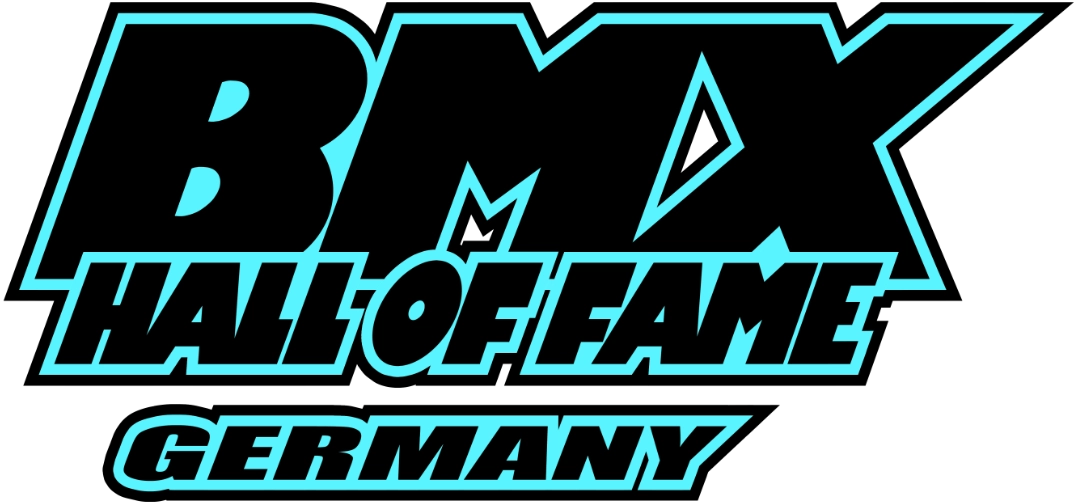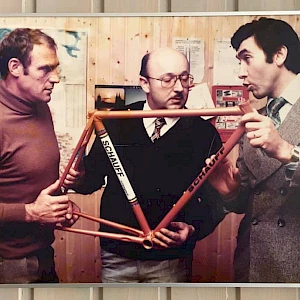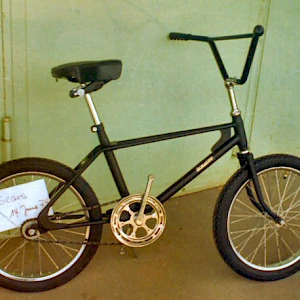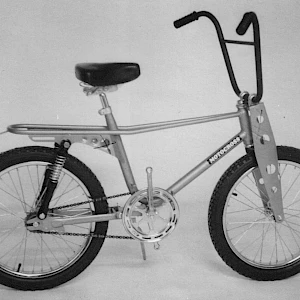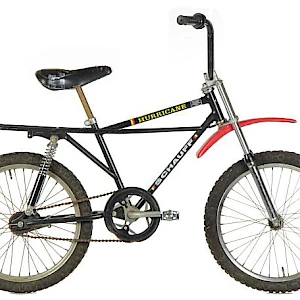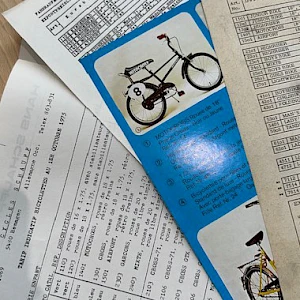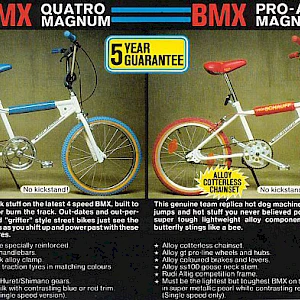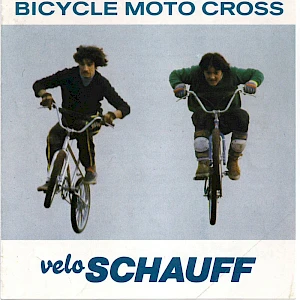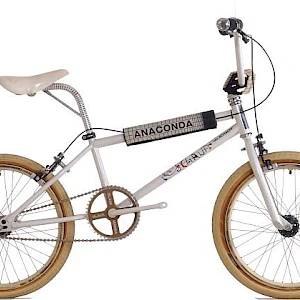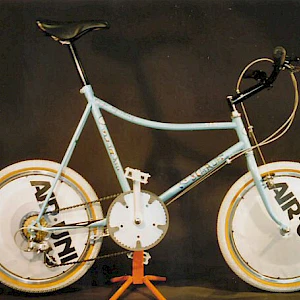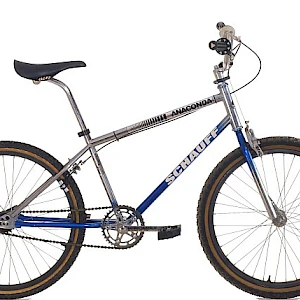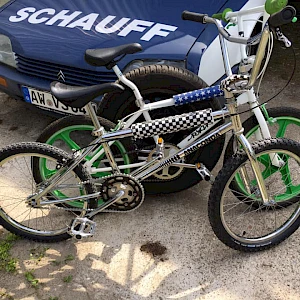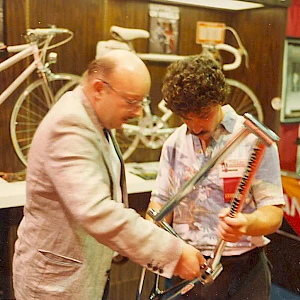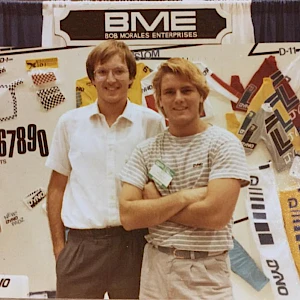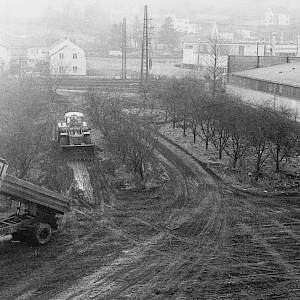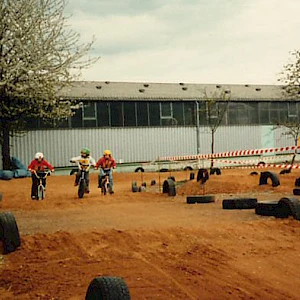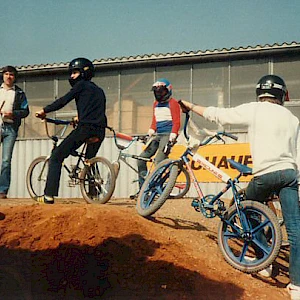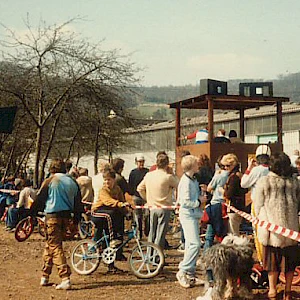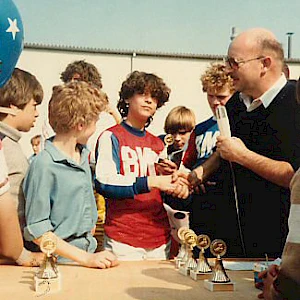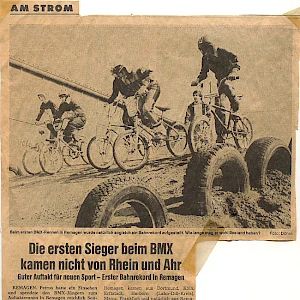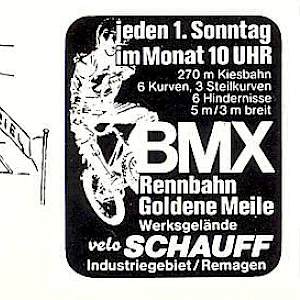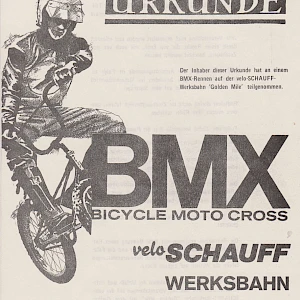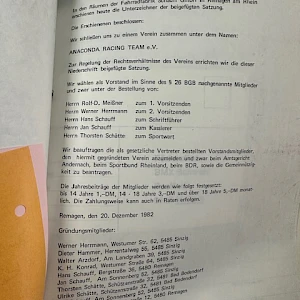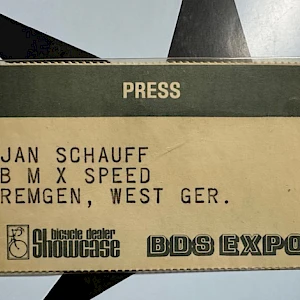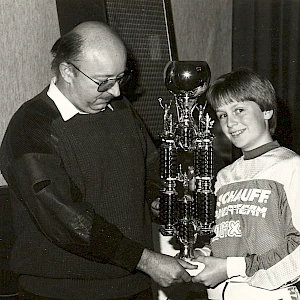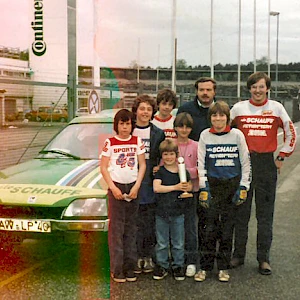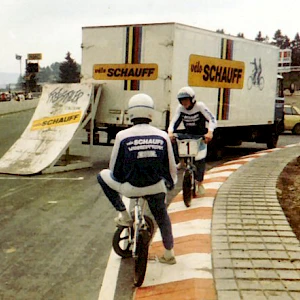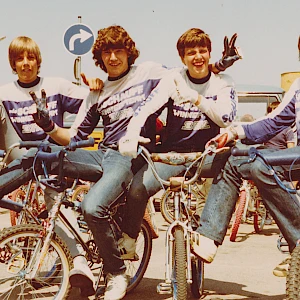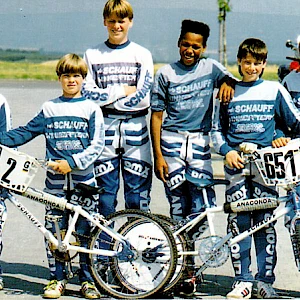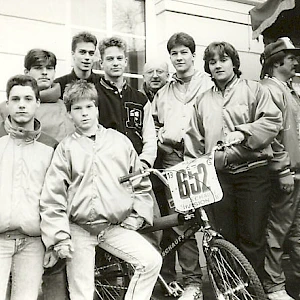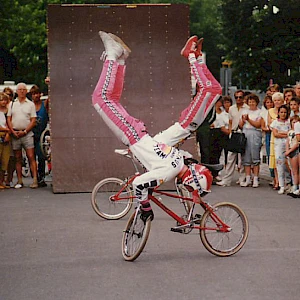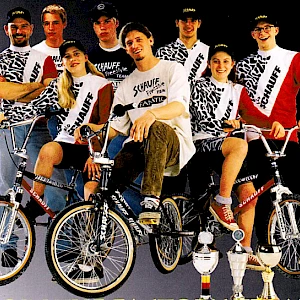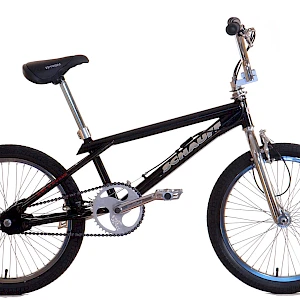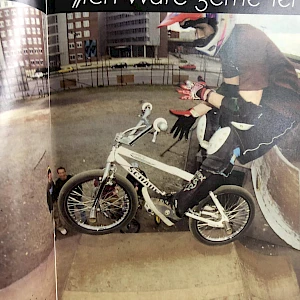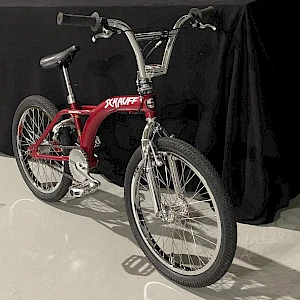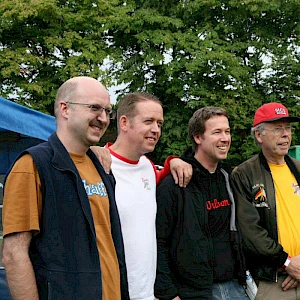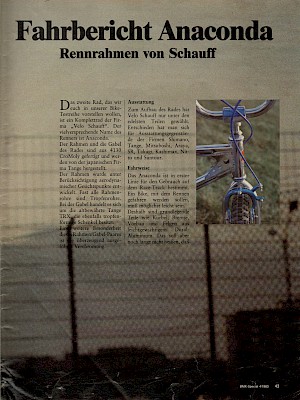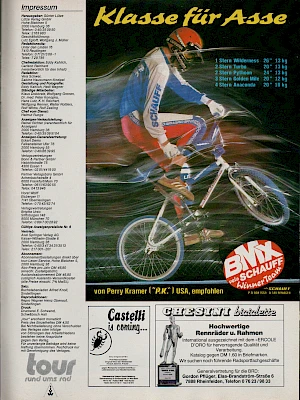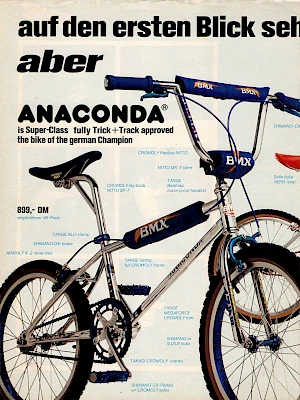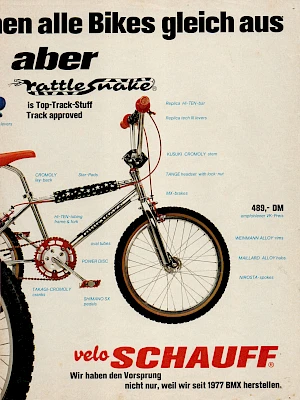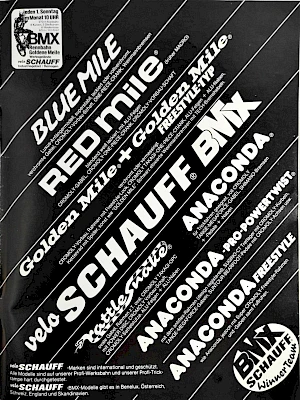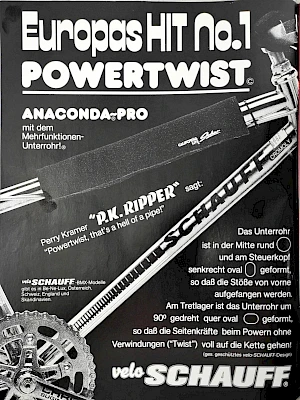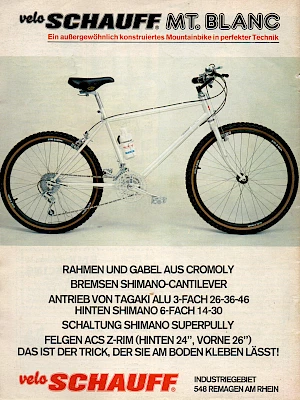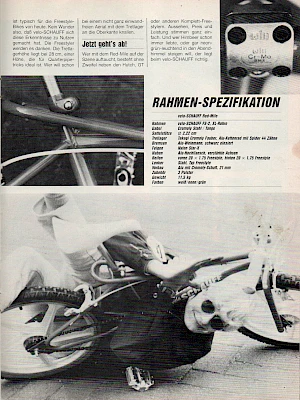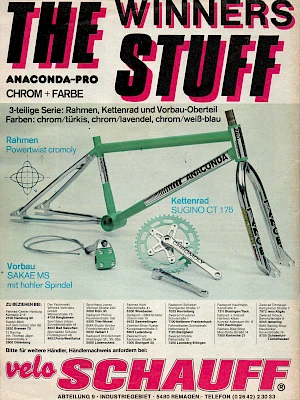Hans Schauff
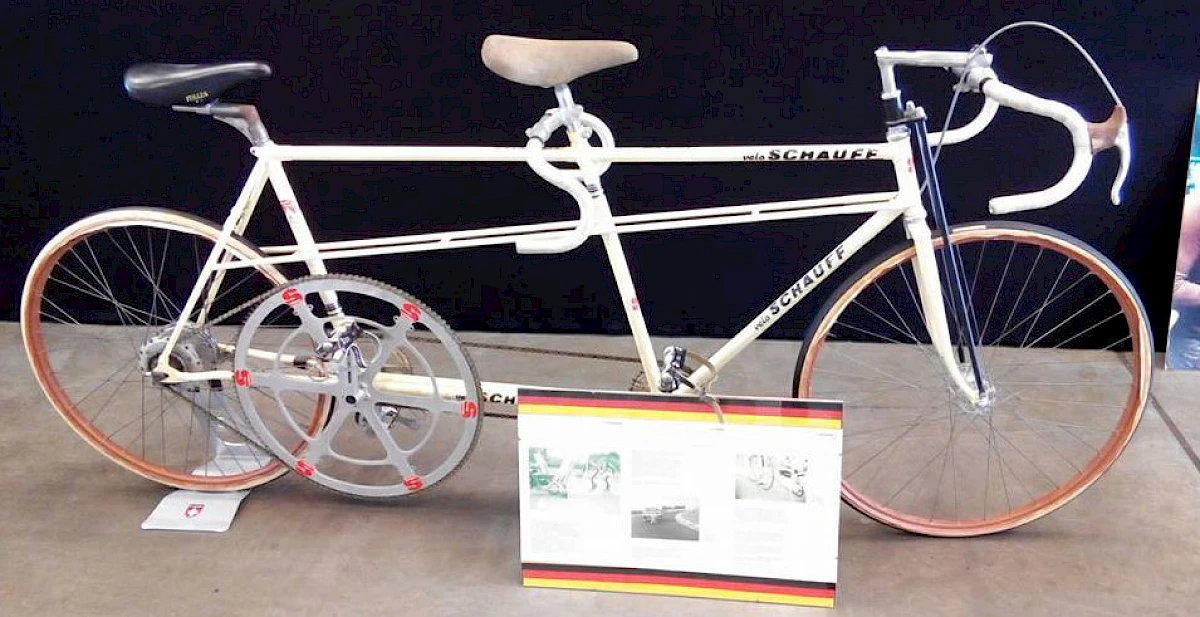
After studying mechanical engineering, Hans Schauff Jr. joined his father's company in August 1959. He had already started welding racing bike frames in Cologne in 1932 and produced bicycles in the Remagen industrial estate from 1968.
He was soon travelling all over the world, as Schauff mainly produced for export. He travelled to Benelux and Scandinavia and also to the USA to take orders for bicycles, which were painted and pre-assembled in Remagen according to customer requirements. At the request of customers, Schauff also began importing components from Japan at an early stage, importing parts from Shimano since 1964, for example.
Schauff also became aware of the young trend sport BMX in the USA in the early seventies thanks to his many visits to trade fairs and built the first BMX bikes for the US department stores' chain Sears in 1974 - a mixture of hi-raiser and Bonanza bike. For the European market, the "Motocross" series followed a year later, wild-looking bikes with a suspension rear triangle, motocross look and double bridge fork. This was followed in 1977 by the "Crossmaster", Schauff's first production BMX bike. The frames and many parts for this bike were also delivered raw from Italy and assembled and painted in Remagen. Hans' son Jan Schauff had orders for 50,000 pairs of Italian cast aluminium rims for the Crossmaster - so the bike seemed to have sold magnificently.

In Germany, among other places: the Cologne skate shop "Blue Diamond" was the first German customer for Schauff BMX bikes and bought 50 of them for its shop. At that time, BMX was still unheard of in Germany and so the bikes were used to make the Domplatte unsafe or to ride mud races on old tank training grounds in Cologne-Ossendorf or Porz. Schauff published his first BMX brochure with the two Cologne riders Max Victoria from Blue Diamond and Nao Tajima on the cover.
Hans Schauff saw BMX as the ideal combination of very early product development and genuine promotion of young cyclists. This allowed him to give children the opportunity to have fun cycling away from car traffic - so building his own track was the natural next step. In 1980, the excavators travelled to the apple orchard behind the company in Remagen and created the "Golden Mile", named after the Golden Mile, a particularly fertile stretch of land on the Rhine between Bad Breisig and Remagen. From 1981 to 1983, BMX races were held there every first Sunday of the month in collaboration with members of the MSC Sinzig and some Cologne BMX parents around Helmut Heidkamp, some of them open to licences and with plenty of rental bikes. The work with young talent paid off: in 1983, the races attracted up to 800 starters.
And with the races, the demand for high-quality BMX products also increased. The first version of the pure racing frame "Anaconda" appeared in 1980 and the oldest existing Schauff frame of the new generation dates back to 1981: made from chromoly tubes from Tange in Japan and equipped with Euro BB bottom brackets. Various versions of the Anaconda frame followed, from the Mini to the Pro-Powertwist to the "PK Anaconda", which was developed in collaboration with Perry Kramer in the USA.
The collaboration with Perry Kramer came about because Schauff was the importer of Race Inc. where Perry worked at the time. Thanks to its close contacts in the industry, the company began importing BMX products from abroad to Germany at an early stage. Schauff's entry into the freestyle scene was also inspired by an import: After the company had launched a Haro freestyler replica under the name "Golden Mile" in 1984, the "Anaconda Freestyler" followed a year later with the double down tube familiar from Vector. Vector, a company that was otherwise only known for its somewhat idiosyncratic, one-piece handlebar/stem combinations, had also been distributed by Schauff for a long time. The "Anaconda Freestyler" turned out to be a huge success and was a fully-fledged alternative in a market dominated at the time by the "GT Performer".
At the same time, Schauff continued to serve the mass market with entry-level bikes, which were sold under the names Magnum, Macro, Turbo, Rattlesnake or Red Mile through bike dealers and the sometimes surprisingly good BMX corners of department stores. After the "Blue Mile" was rated "good" by the German consumer organisation Stiftung Warentest, it became a bestseller. The "Golden Mile" with a golden frame remains an eye-catcher to this day. All of these bikes have always been developed by Hans Schauff himself together with Thorsten Schätte, the long-standing head of the BMX department, as well as with input and feedback from the team riders.
Team riders, of which there have been many over the years. From the very beginning, Hans Schauff felt obliged to support riders in their sporting ambitions. At the end of 1982, he founded the Anaconda Racing Team, which shortly afterwards was renamed BMX Club Track Burners Remagen e. V. - a club whose members were able to buy at a reduced price from Schauff. Riders such as Jan van Eijden, Heiko Hirzbruch and Manfred Stromberg started their careers in the Schauff team. Schauff also made a name for itself in freestyle. After the early trick shows of the Schauff-supported "Sturmvogel" from Munich or a team of freestylers from Remagen, Thomas Germann and Björn Paetow were probably the first German freestylers to attract attention throughout Germany via the pages of "BMX Special". In 1986, the Schauff Freestyle Team from Bonn followed with Andreas Althaus, Robert Möller and Mathias Rechenburg, who made a name for themselves in the early contest scene.
However, the BMX racing scene shrank and the demand for complete bikes declined. Schauff kept in touch with the scene through the long-time boss of Trackburners, Jürgen Gemein (RIP), who later became the BDR national coach. They continued to supply BMX dealers with components and sponsored riders until the early 1990s. The Schauff Midschool Freestyle Team, led by Thomas Grundheber, followed on almost seamlessly from there. Thomas came to the new Schauff shop with his team to ride shows and went home with a job as team manager while his riders got a new sponsor. With Tim Eichert (RIP) and Sven Fanghänel, the frames "The Bomb" and "A Bomb" were created and Jan Schauff designed modernised versions of the Schauff classics "Rattlesnake" and "Black Mamba". In Maik Dettmer, the team had one of the most talented flatlanders of his time in its ranks, even though the Schauff flatland frame with its radical one-tube design never went into series production.
However, Schauff was never able to get to grips with modern BMX bikes, their small gear ratios and the extreme focus on lightweight construction. The dealer structure in Germany collapsed and domestic production would only have been possible, if at all, through direct sales. Schauff therefore discontinued the BMX programme and indirectly switched to supplying the constantly growing old-school scene. Dieter Schadowski became a regular guest at Schauff and built many an Anaconda frame for his customers.
Hans Schauff Jr. passed away in autumn 2016 at the age of 83. He was an unconventional personality in the bicycle industry who enjoyed developing bicycles and was well ahead of his time with many an idea.
But Schauff's commitment to BMX continues. Even though the company has specialised in one-offs and custom-made products since the end of mass production in 2004, Jan Schauff, Hans' son, remains active in the old-school BMX scene. He has witnessed the development of the sport from an early age and has been on the road both as a racer and in the race organisation or as a reporter for BMX Special and later BMX Speed. A few years ago, he set up a virtual BMX museum dedicated to the BMX history of the Schauff company, and 20 years ago his father started to set up a factory museum in the old company, so it naturally makes sense to bring the two together. The collection is impressive: the oldest exhibit is a racing bike from 1938, and there is also plenty for BMX enthusiasts to see: Schauff prototypes, rare one-offs and old treasures from Race Inc, SE Racing or Vector. Anyone who has ever been to one of the annual "steel bike meetings" in Remagen has already been able to get an impression of it. The plan is to set up an exhibition in the old factory that will showcase both the bikes and the jobs involved in bike production.
Hans Schauff was inducted into the German BMX Hall of Fame in 2025 for his contribution to the development of the BMX sport, his many years of support for the scene and his constant commitment in all areas of the sport.
